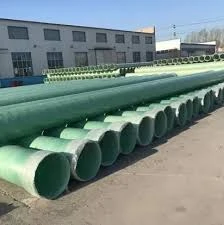
-
 Afrikaans
Afrikaans -
 Albanian
Albanian -
 Amharic
Amharic -
 Arabic
Arabic -
 Armenian
Armenian -
 Azerbaijani
Azerbaijani -
 Basque
Basque -
 Belarusian
Belarusian -
 Bengali
Bengali -
 Bosnian
Bosnian -
 Bulgarian
Bulgarian -
 Catalan
Catalan -
 Cebuano
Cebuano -
 China
China -
 China (Taiwan)
China (Taiwan) -
 Corsican
Corsican -
 Croatian
Croatian -
 Czech
Czech -
 Danish
Danish -
 Dutch
Dutch -
 English
English -
 Esperanto
Esperanto -
 Estonian
Estonian -
 Finnish
Finnish -
 French
French -
 Frisian
Frisian -
 Galician
Galician -
 Georgian
Georgian -
 German
German -
 Greek
Greek -
 Gujarati
Gujarati -
 Haitian Creole
Haitian Creole -
 hausa
hausa -
 hawaiian
hawaiian -
 Hebrew
Hebrew -
 Hindi
Hindi -
 Miao
Miao -
 Hungarian
Hungarian -
 Icelandic
Icelandic -
 igbo
igbo -
 Indonesian
Indonesian -
 irish
irish -
 Italian
Italian -
 Japanese
Japanese -
 Javanese
Javanese -
 Kannada
Kannada -
 kazakh
kazakh -
 Khmer
Khmer -
 Rwandese
Rwandese -
 Korean
Korean -
 Kurdish
Kurdish -
 Kyrgyz
Kyrgyz -
 Lao
Lao -
 Latin
Latin -
 Latvian
Latvian -
 Lithuanian
Lithuanian -
 Luxembourgish
Luxembourgish -
 Macedonian
Macedonian -
 Malgashi
Malgashi -
 Malay
Malay -
 Malayalam
Malayalam -
 Maltese
Maltese -
 Maori
Maori -
 Marathi
Marathi -
 Mongolian
Mongolian -
 Myanmar
Myanmar -
 Nepali
Nepali -
 Norwegian
Norwegian -
 Norwegian
Norwegian -
 Occitan
Occitan -
 Pashto
Pashto -
 Persian
Persian -
 Polish
Polish -
 Portuguese
Portuguese -
 Punjabi
Punjabi -
 Romanian
Romanian -
 Russian
Russian -
 Samoan
Samoan -
 Scottish Gaelic
Scottish Gaelic -
 Serbian
Serbian -
 Sesotho
Sesotho -
 Shona
Shona -
 Sindhi
Sindhi -
 Sinhala
Sinhala -
 Slovak
Slovak -
 Slovenian
Slovenian -
 Somali
Somali -
 Spanish
Spanish -
 Sundanese
Sundanese -
 Swahili
Swahili -
 Swedish
Swedish -
 Tagalog
Tagalog -
 Tajik
Tajik -
 Tamil
Tamil -
 Tatar
Tatar -
 Telugu
Telugu -
 Thai
Thai -
 Turkish
Turkish -
 Turkmen
Turkmen -
 Ukrainian
Ukrainian -
 Urdu
Urdu -
 Uighur
Uighur -
 Uzbek
Uzbek -
 Vietnamese
Vietnamese -
 Welsh
Welsh -
 Bantu
Bantu -
 Yiddish
Yiddish -
 Yoruba
Yoruba -
 Zulu
Zulu
Advancements in Composite Material Piping Systems for Enhanced Durability and Performance
Reinforced Plastic Pipe A Technological Breakthrough in Modern Infrastructure
In recent years, the demand for durable, lightweight, and corrosion-resistant materials in construction and infrastructure has led to the growing popularity of reinforced plastic pipe (RPP). This innovative material combines the advantages of traditional plastics with enhanced strength and durability, making it an ideal choice for a variety of applications, including water supply, wastewater management, and industrial processes.
Reinforced plastic pipes are typically composed of a thermoplastic matrix, such as polyvinyl chloride (PVC) or polypropylene (PP), reinforced with materials like fiberglass or carbon fiber. This combination provides a material that is not only lightweight but also exhibits superior strength-to-weight ratios compared to conventional piping systems. The use of reinforcement materials helps to counteract any potential weaknesses posed by the plastic components, making RPP a robust solution for demanding environments.
One of the most significant advantages of reinforced plastic pipes is their resistance to corrosion. Unlike metal pipes, which can rust or corrode over time when exposed to moisture and various chemicals, RPP does not suffer from these issues. This resistance extends the lifespan of the piping system, reduces maintenance costs, and ensures a reliable flow of water or other fluids without the risk of contamination. As a result, reinforced plastic pipes are increasingly being used in municipal water and sewage systems, where reliability and longevity are paramount.
reinforced plastic pipe

In addition to corrosion resistance, RPP is also extremely durable under various environmental conditions. It can withstand extreme temperatures, pressure fluctuations, and even seismic activity, making it suitable for use in diverse climates and geographical locations. This durability is especially beneficial in areas prone to natural disasters, where traditional piping materials might crack or fail under stress. Reinforced plastic pipes provide peace of mind for engineers and city planners, knowing that they can depend on these advanced materials for long-term use.
Another key benefit of reinforced plastic pipes is their lightweight nature. Compared to metal pipes, RPP is significantly lighter, simplifying transportation and installation processes. This characteristic reduces labor costs and allows for quicker project completion times. Furthermore, the flexibility of reinforced plastic pipes makes them easier to handle and install in various environments, including cramped or difficult-access areas. This adaptability has made RPP a preferred choice for contractors seeking efficiency without compromising quality.
Sustainability is an increasingly important consideration in modern construction, and reinforced plastic pipes also align well with eco-friendly principles. Many of these pipes are manufactured using recycled materials, and their long lifespan means they do not need to be replaced as frequently as traditional materials. Additionally, RPP can help reduce water leakage, which is crucial for conserving precious resources, especially in regions where water scarcity is a concern.
In conclusion, reinforced plastic pipes represent a significant advancement in piping technology, offering a range of benefits that traditional materials cannot rival. Their superior corrosion resistance, durability under extreme conditions, lightweight characteristics, and eco-friendly aspects make them an optimal choice for modern infrastructure projects. As cities and industries continue to evolve, incorporating reinforced plastic pipes will undoubtedly play a critical role in developing sustainable, resilient systems that can meet the challenges of the future. As awareness of their advantages grows, we can expect to see reinforced plastic pipes becoming an integral part of our global infrastructure landscape.









